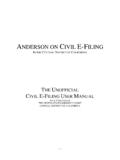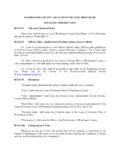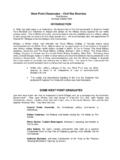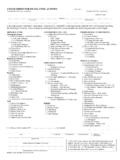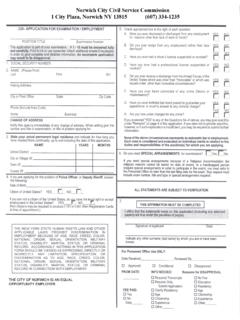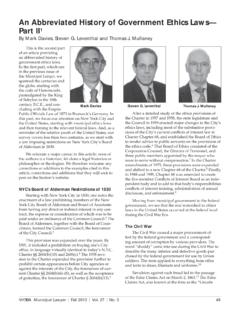Transcription of A Brief History of Civil Defence
1 A Brief History of Civil Defence Edited by Tim Essex-Lopresti A Brief History of Civil Defence PDF created with pdfFactory Pro trial version First published in Great Britain in 2005 by the Civil Defence Association 24 Paxton Close, Matlock, Derbyshire DE4 3TD Copyright Civil Defence Association 2005 All rights reserved. It may be copied for non-commercial personal, research or educational purposes provided full acknowledgement is given. No part of this publication may be reproduced, stored in a retrieval system or transmitted, in any form or by any means, electronic, mechanical, photocopying or otherwise, with-out the prior written permission of the publisher for commercial purposes. A copy can be downloaded from the CDA website in pdf form (with pictures in lower resolution) at The editor and chapter authors assert the moral right to be identified as the authors of this work.
2 The source of all of the pictures used in this book is given alongside each one. In particular the CDA is grateful to Associated Newspapers Ltd for access to their print library. If there are any infringements of copyright in any of the pictures then they are innocent. Please let the publishers know and this will be remedied in any future issue. A CIP catalogue record for this book is available from the British Library. ISBN 0-9550153-0-8 Printed and bound in Great Britain by Higham Press Ltd, New Street, Shirland, Alfreton, Derbyshire DE55 6BP PDF created with pdfFactory Pro trial version A Brief History of Civil Defence Edited by Tim Essex-Lopresti Contents Chapter Author Page Introduction 3 Foreword Lord Renton 5 1 Pre-WWII Preparations Robin Woolven 7 2 Civil Defence in WWII Robin Woolven 12 3 Fire Services in WWII Alan House 23 4 1945 Stand-Down Robin Woolven
3 32 5 Civil Defence Corps 1949-68 Eric Alley 35 6 Auxiliary Fire Service 1949-68 Alan House 46 7 1968 Stand-Down Frank Raine-Allen 53 8 Civilian Animals Tim Essex-Lopresti 59 9 Civil Defence Today Graham Whitehead 65 10 The Future Tim Essex-Lopresti 73 Sources of Further Information 76 About the Authors Inside back cover Civil Defence ASSOCIATION 1 PDF created with pdfFactory Pro trial version Associated Newspapers The coffin of Sir Winston Chur-chill, with Grenadier Guard Bearers being carried up the River Thames, heading for the Festival Hall Pier, on the Port of London Survey Boat Havengore.
4 In the lower picture the dockside cranes can be seen dipping in salute as RAF jets fly overhead. Associated Newspapers PDF created with pdfFactory Pro trial version We all need heroes. When I was young, just after WWII, it was too fresh so we looked further back to such as Admiral Lord Nelson, Francis Drake, Boadicea, Liv-ingstone, Columbus etc. The events which caught our imaginations included the Charge of The Light Brigade, The Battle of Omdurman, The Afghan Wars, Gal-lipoli, Agincourt and Trafalgar. With the books being published in the 1950 s our attention was drawn back to WWII and its heroes such as Douglas Bader, Stirling, Aude Wingate and Montgomery. We even learnt respect for Rommel. Colditz Cas-tle, Dunkirk and Normandy and their stories became familiar but all of these in-volved the Military.
5 Even The Man Who Never Was , that amazing tale of decep-tion made into a film, though the silent hero was a civilian when he died, was part of a military operation. The death and magnificent state funeral in 1965 of Sir Winston Churchill ensured that his name would remain at the top of our list of heroes. It was only when the story of The Second Great Siege of Malta and some details of the privations and the determination of the ordinary people of that small Mediter-ranean Island became public and that they had been awarded the George Cross did we begin to realise that there were many civilian men and women, both here in the UK and elsewhere, who were also heroes - just leading ordinary lives in times of extreme difficulty.
6 This book outlines their story. It is a tribute from today s Civil defenders to the 1,900,000 Civil Defenders of WWII and to the nearly 7,000 who died as a result of enemy action. It is hoped that it will help to perpetuate their memory and their vol-unteer spirit. There are many people who ask their neighbour Can I help? but we could all do more. There are many who join a wide range of volunteer groups today but more volunteers are needed. As the Government rightly tells us, we live in dan-gerous times whether this be as a result of earthquakes, global warming, unseasonal weather patterns, terrorism or crime. However, they do not tell us how we can help each other when the full-time emergency services become overloaded.
7 As John F Kennedy, while President of the USA, said Ask not what your coun-try can do for you ask what you can do for your country . I am very grateful to the members of the Civil Defence Association who have written the chapters of this book. Each of them is an expert in their field. I am also grateful to Associated Newspapers for allowing me free run of their photograph ar-chive, the Imperial War Museum and to members of the CDA who supplied photo-graphs from their family albums and information from their personal experiences. Finally, the CDA is grateful to the Home Front Recall Lottery Fund for their financial grant which has enabled copies of this booklet to be printed as part of our contribution to the celebrations surrounding the 60th Anniversary of the end of WWII.
8 Tim Essex-Lopresti Editor, March 2005 3 PDF created with pdfFactory Pro trial version Sir John Hodsoll is often referred to as The Father of Civil Defence . After retiring from the RAF in 1935 he was appointed Assistant Under Secretary of State at the Home Office directly responsible for the newly created Air Raid Precautions Department. By 1938, at or near, the time of the Munich crisis, his work with the Department had shown the need for the public to be made more keenly aware of the problems likely to affect them. It was obvious that time was, as he put it, running out like the tide , and his energy and drive were geared to widening and intensifying the role of his Department. He was promoted to the Office of Inspector General of all Air Raid Precautions Services, the Home Office Departmental administration being taken over by hands he had trained.
9 From then until the end of the Second World War he worked ceaselessly for those engaged in Civil Defence . At the end of the Second World War in 1945, the Civil Defence Services were disbanded, but he could see clearly the need for maintaining the expertise in this field, and his voice was heard time and again warning of the futility of disbandment. When the Civil Defence Corps was formed in 1948, due largely to the threat posed by atomic weapons, he was appointed Director General of Civil Defence Training, and he was instrumental in building up a service designed to withstand the attacks then thought possible. He continued in this capacity until 1954 when, retiring once more, he was persuaded to take on the more onerous and difficult task of Chief Civil Defence Adviser to NATO, being directly responsible for the Civil Emergency Planning section.
10 Sir John Hodsoll CB Hodsoll Family PDF created with pdfFactory Pro trial version FOREWORD World War II lasted in Europe from September 1939 until April 1945. In Britain, the civilian population, which was largely indefen-sible, suffered severely but Civil Defence played a vital part in pro-tecting the people and in saving many of those who had been in-jured. Altogether in the United Kingdom, 60,595 civilians were killed in air raids, and thousands were injured, some very seriously. I served in the Royal Artillery (Anti-Aircraft) in the Battle of Brit-ain of 1940 in South East England and was deeply worried by the casualties suffered by civilians, especially women and children. From 1942 to 1945 I served overseas.

